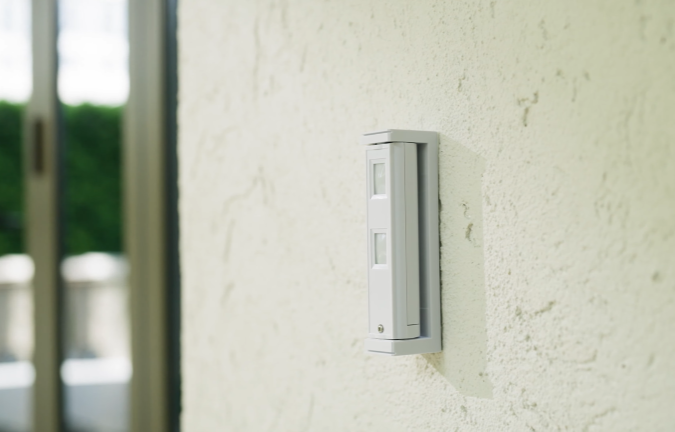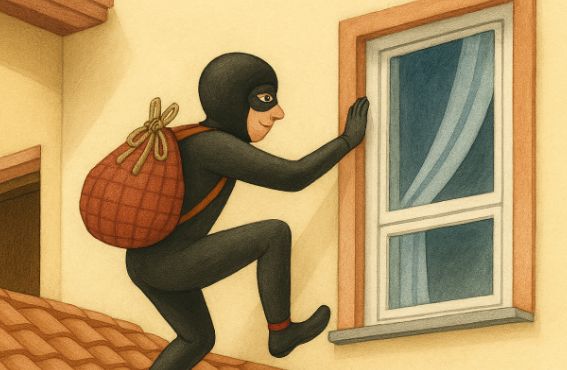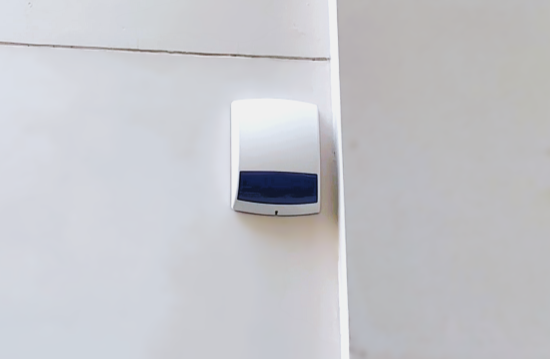Safety Begins by Stopping Burglars from Scouting
Burglars Don’t Choose Targets Randomly – They Scout in Advance
To protect your family and employees, the first step is to understand how burglars operate.
Do you believe that “burglars strike without warning”?
In reality, many break-ins are carefully planned. Burglars often scout homes and businesses beforehand to assess how easy it would be to break in, and only then do they take action.
What Are the Typical Behaviors of Burglars?
Burglars often walk around neighborhoods during the daytime, quietly observing their surroundings to identify potential targets. They look for subtle clues such as the contents of mailboxes, whether curtains are open or closed, and lighting patterns — all of which help them determine when a place is likely unoccupied or if there are signs of human presence.
In the case of businesses, they check for operating hours, the presence of security personnel, and the condition of back entrances.
Some burglars even visit the same location multiple times to observe patterns — conducting several rounds of scouting. In other words, their actions are not random; they break in with confidence, based on careful observation.
Why Is Scouting So Important for Burglars?
Breaking into a property is a high-risk act for burglars. That’s why they carefully assess in advance whether they can enter safely and whether the chances of being caught are low.
In many cases, just the visible presence of security equipment is enough to make a burglar think, “I’d better skip this place.”
In other words, the first step in crime prevention is to make burglars give up during the scouting phase.
What Do Burglars Look for When Scouting a Target?
Burglars don’t choose their targets randomly. Before breaking in, they often conduct a preliminary check, looking for signs that indicate how easy it might be to enter. The following points are especially important and should be carefully considered:
1. Times When No One Is Home / Daily Routines
Burglars often observe when residents leave and return home. In the case of businesses, they may target specific hours based on operating times and staff movement. Signs like piled-up mail or lights that remain off at night can signal to burglars that no one is currently present—making the property more vulnerable.
2. Presence (or Absence) of Security Equipment (Sensors, Cameras, Lights, etc.)
Visible security devices such as surveillance cameras or motion-activated lights can serve as strong deterrents. Burglars tend to avoid properties where the risk of being caught is high. On the other hand, if no security equipment is installed—or if it’s poorly placed and hard to notice—the property may be seen as an easy target. This is especially true for business premises, where back doors or storage areas are often less protected.

3. Vulnerable Entry Routes (Windows, Back Doors, Fences, etc.)
Burglars tend to focus on unsecured windows, hidden back doors, and fences that are easy to climb over. In hot-climate regions, many homes are designed to be open due to the weather, and it’s not uncommon for windows to be left open. This kind of environment can give burglars the impression that the property is easy to enter, making it especially important to stay vigilant.
While ground-floor windows are an obvious concern, second-floor windows shouldn’t be overlooked either. Burglars often climb fences, sheds, drainpipes, or outdoor air conditioning units to reach upper levels. Windows facing balconies or those with simple locking mechanisms are particularly vulnerable.

4. Surrounding Environment (Foot Traffic, Distance to Neighboring Houses)
Buildings located in areas with little foot traffic or far from neighboring houses offer burglars an ideal setting where they are less likely to be noticed. For burglars, being seen is the biggest risk. That’s why locations with frequent passersby and visibility from nearby residents are often avoided during the scouting phase.
Security Measures to Prevent Scouting
The first step in crime prevention is making burglars think, “This place isn’t worth the risk”. If you can raise their level of caution during the scouting phase—before any break-in occurs—you greatly increase the chances of preventing a crime altogether. By leveraging both technology and community awareness, it’s important to create the impression that your property is difficult to access.
1. Placement and Visibility of Security Cameras and Sensors
Installing security cameras and sensors is not enough—they need to be placed where they are clearly visible. When burglars notice a camera, they often avoid the property out of fear that evidence will be recorded. Dummy cameras and warning stickers can also be used to reinforce the impression of strong security.

2. Use of Sensor Lights
Sensor lights can startle intruders and deter them from entering. This simple solution creates the impression that someone is always watching.
3. Creating the Feeling of Being Watched
In addition to cameras, sensors, and lights, it’s also effective to simulate human presence. For example, using timers to automatically turn on lights can make it appear as if someone is home. Just the possibility that someone might be present can be enough to make burglars reconsider.
4. Neighborhood Cooperation and Community Watch
In regions with strong community ties, such as in many parts of Southeast Asia, cooperation among neighbors plays a powerful role in crime prevention. Actions like speaking up when seeing suspicious individuals or sharing information help create a sense of collective vigilance—one of the strongest deterrents against burglary.
A Checklist You Can Start Using Today
Even if you think, “My place is safe,” burglars often notice things you might overlook. Start by checking the security of your home or business yourself. Just reviewing the points below can help create an environment that discourages scouting.
Self-Check for Home or Business Security
- Are security cameras, motion sensors, or sensor lights installed in visible locations?
- Are there any blind spots, such as second-floor windows or back doors?
- Is mail piling up, or does the property look unoccupied?
- How close are neighboring houses or buildings? Is the area visible to others?
Tips for Creating a Hard-to-Scout Environment
- Install motion sensors or sensor lights along common walking paths.
- Place security cameras in visible spots and use stickers to highlight their presence.
- Use timers to automatically turn on lights at night to simulate occupancy.
- Build a habit of neighbors speaking up when they see suspicious individuals.
- Regularly check that all security equipment is functioning properly.
Security Is About Being Seen
Simply installing cameras and sensors is not enough. The key to effective crime prevention is making burglars think, “This place is well protected”. In other words, visible security measures are far more effective as a deterrent.
At OPTEX, we offer a wide range of products designed for this kind of “visible security.” For example, outdoor motion sensors, beam sensors for fences, and outdoor sirens mounted on exterior walls can all create a strong sense of alertness just by being installed. When combined with sensor lights and cameras, these devices help build a natural and effective security environment.

Contact OPTEX
Please feel free to contact us for further information.
We are always eager to support you and propose a solution that suits your needs.